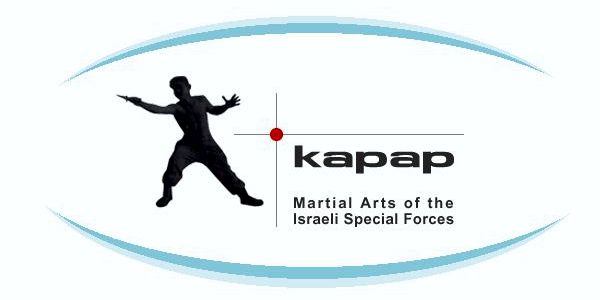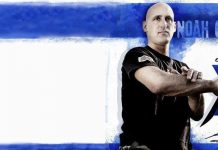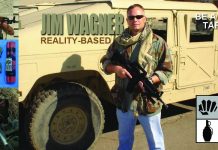Kapap was the first CQB training introduced in Israel and was based on stick fighting, knives, guns, hand-to-hand and even stone throwing in the old days. The idea is to fight with what you have available in your hand.
On a sunny day in June 2003, according to witnesses, a group of men who looked like Palestinian laborers were seen transporting diapers and lounging around a van outside of a mosque in Hebron. When a Hamas terrorist mastermind named Kawasme emerged from the crowd of worshipers, he unexpectedly came face to face with the group of men transporting the diapers as they pulled out their firearms and ordered him to stop. Kawasme, who was responsible for several terrorist bombings that had killed 52 people in Israel, had no way of knowing that the men he was now facing were undercover Israeli agents, members of an elite Israeli Special Forces unit known as the Yamam.
In March 1988, three terrorists seized a bus carrying employees on their way to work near the city of Dimona. The Yamam arrived at the scene first and took operational command. When the terrorists broke off negotiations and turned their guns on the passengers, the Yamam launched a three-pronged assault as each squad rushed a different section of the bus. In all, the “Mothers Bus” operation took a little more than a half minute to complete resulting in only three Israeli fatalities – hostages shot by the terrorists.
These are just a few publicized examples of the types of operations carried out by the Yamam, which carries out more than 900 counter terror operations a year. Recently, when asked about the effectiveness of the Yamam, a source from the Israeli Prime Minister‘s office stated, “The Yamam is a totally professional unit that can virtually guarantee a clean kill or capture. It is the top unit in Israel today.”
Every year, out of the 12,000 potential recruits that apply from Israeli Army Special Forces units, less than 10 recruits make it through the grueling 12 months of training. Part of the training includes extensive work in hand-to-hand combat, simply known as Kapap or “Krav Panim El Panim.” After graduating, members continue their training in Kapap even though most carry black belts in several other martial arts. It is this type of hand-to-hand training that allows a select few within the Yamam to be used for so-called “black operations” on behalf of the Shin Bet security service and the Mossad. Although the Yamam is an excellent springboard for a career, many veterans go freelance after only a few years with many of these veterans operating some of the best Israeli security schools. Other Yamam veterans end up in darker areas of the globe training teams of bodyguards and mercenaries.
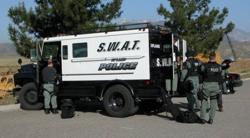 Today, I met up with Avi Nardia, a retired member an official Israeli defensive tactics/CQB instructor, as he was conducting training for the Upland SWAT Team in Riverside, California.
Today, I met up with Avi Nardia, a retired member an official Israeli defensive tactics/CQB instructor, as he was conducting training for the Upland SWAT Team in Riverside, California.
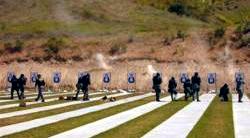 Mr. Nardia is not only one of Israel’s top martial arts instructors, but he is also the only Israeli instructor to teach Kapap/CQB to the Yamam unit, Israeli Krav Maga to the Israeli Defense Force (IDF), and Hagana Hatzmit (defensive tactics) at the Israeli Operational Police Academy – which is mandatory training for all law enforcement units in Israel. I asked him to comment on the Israeli martial arts of today since there seems to be a variety of names and organizations associated with the term “Israeli” or “Krav Maga.” This is what he had to say:
Mr. Nardia is not only one of Israel’s top martial arts instructors, but he is also the only Israeli instructor to teach Kapap/CQB to the Yamam unit, Israeli Krav Maga to the Israeli Defense Force (IDF), and Hagana Hatzmit (defensive tactics) at the Israeli Operational Police Academy – which is mandatory training for all law enforcement units in Israel. I asked him to comment on the Israeli martial arts of today since there seems to be a variety of names and organizations associated with the term “Israeli” or “Krav Maga.” This is what he had to say:
Israeli Krav Maga is a beautiful CQB system created by one of the most influential and leading instructors in Israel’s history – Imi Lichtenfield or as others know him, Imi Or-Sadeh, may he rest in peace. However, Krav Maga is a generic term and is defined in Israel as a hand-to-hand fighting system based on close quarters combat. Again, it is a generic term with “Maga” meaning close quarter or touch/contact and “Krav” meaning battle or combat. Around the late 70’s and 80’s, this system was introduced to the civilian sector by Imi with most of his knowledge being based upon his experience with boxing and wrestling. Because military and law enforcement agencies in Israel and around the world have a limited amount of time in which to teach the participants, the program of many of the Israeli CQB systems will be based on simplicity. These techniques will also be basic, allowing the participant to learn and perform the techniques in a quick and timely manner. Another factor that comes into play is liability. What is taught to the Israeli military sector is definitely not taught to the law enforcement sector, and what is taught to the law enforcement sector is not taught to the civilian sector. The reason for this is that the threat levels are simply not the same so the time that they get for training and the techniques they are taught are not the same. A military unit that is only doing intelligence gathering does not need the same type of CQB training as a unit that performs high-risk procedures such as a take-over unit. This is what people who think they are taking Israeli martial arts need to recognize. Not all Israeli units get the same kind of CQB training. Believe it or not, some units such as tank units don’t get any CQB training at all.
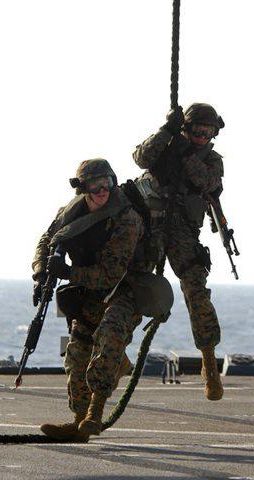 This is why it is important to ask instructors who are claiming to teach Israeli CQB if they were in the Israeli army or in the Israeli police or if they were in the civilian sector. The truth is you won’t find a majority of Israeli CQB instructors in the civilian sector teaching at the police or Secret Service academies in Israel because the level of intensity is much higher. The only common denominator is that almost all of the Israeli army, police, and civilian instructors will use the term Krav Maga to indicate that they are conducting some type of martial arts training. However, the reality is that there are actually specialized forms of Krav Maga that are more specific and that use different names to describe each discipline. For instance, Ran Cohen and Gabi Ishai, both former Israeli Secret Service instructors, use the term “Operational Krav Maga.” Another former instructor after Imi Lichtenfield, Eli Avikazar, rest in peace, changed the name from Krav Maga to “Krav Magen.” One of the top Israeli Army instructors, Lt. Colonel Chaim Peer, uses the term “Kapap/Lotar,” while at the same time the counter-terrorism unit Yamam, which at one time used the term “Lochama Zeira,” which means micro combat, also use the term “Kapap/Lotar.” Another example is Dennis Hanover who uses the term “Hisardut Survival.” Moni Aizik uses “Commando Krav Maga,” Mike Lee Kanrek uses the term “Hagana,” Gadi Skornik uses “Gadi Kenpo,” while others such as Chaim Zoot, Chaim Gideon, Gabi Noach, Derren Levin and many more continue to use the generic term Krav Maga.
This is why it is important to ask instructors who are claiming to teach Israeli CQB if they were in the Israeli army or in the Israeli police or if they were in the civilian sector. The truth is you won’t find a majority of Israeli CQB instructors in the civilian sector teaching at the police or Secret Service academies in Israel because the level of intensity is much higher. The only common denominator is that almost all of the Israeli army, police, and civilian instructors will use the term Krav Maga to indicate that they are conducting some type of martial arts training. However, the reality is that there are actually specialized forms of Krav Maga that are more specific and that use different names to describe each discipline. For instance, Ran Cohen and Gabi Ishai, both former Israeli Secret Service instructors, use the term “Operational Krav Maga.” Another former instructor after Imi Lichtenfield, Eli Avikazar, rest in peace, changed the name from Krav Maga to “Krav Magen.” One of the top Israeli Army instructors, Lt. Colonel Chaim Peer, uses the term “Kapap/Lotar,” while at the same time the counter-terrorism unit Yamam, which at one time used the term “Lochama Zeira,” which means micro combat, also use the term “Kapap/Lotar.” Another example is Dennis Hanover who uses the term “Hisardut Survival.” Moni Aizik uses “Commando Krav Maga,” Mike Lee Kanrek uses the term “Hagana,” Gadi Skornik uses “Gadi Kenpo,” while others such as Chaim Zoot, Chaim Gideon, Gabi Noach, Derren Levin and many more continue to use the generic term Krav Maga.
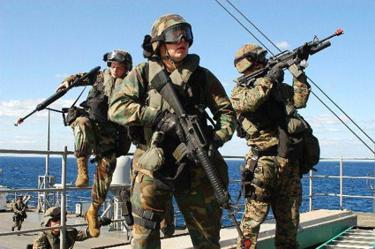
Although the Israeli army uses the term Krav Maga, which, by the way, has nothing to do with the civilian market since the Israeli army curriculum doesn’t follow the civilian curriculum, the police academy uses the term “Hagana Atsmit,” which means self-defense. The reason for this is that the police want to convey an image of self-defense for arrest and control – a less lethal approach than that of the military. Also, the police academy considers the term Krav Maga as being too political to use because too many organizations were fighting over who had the right to use it and because it really has nothing to do with being the official fighting system of the Israeli police or the Israeli army. The reason for this is that all of them are private organizations anyway, with no one organization being more “official” than the other.
So, you can see that the term Krav Maga is a general term. More specifically, to Israeli’s, the term Krav Maga is the same term as what Karate is to the Japanese. The question is, if you are training in Japanese Karate, do you know Shotokan, Kyokoshin Kai, or Wado Ryu? These styles all have different founders and are from different organizations, but they are all Karate. The same idea applies to Krav Maga. Another example of how Krav Maga is viewed in Israel can be seen on Israeli medical insurance cards. These insurance cards will read what physical restrictions an individual has and often times they will restrict persons from doing any type of activity such as running, biking, Krav Maga, or lifting, while they are in rehabilitation. However, this does not mean a person cannot do Krav Maga, it only means the person cannot do any type of martial arts training.
I think, originally, Israeli martial arts were more of a concept rather than a traditional martial arts system such as Judo or Karate. At first, the idea was to study Israeli CQB and also keep training in the traditional martial arts to obtain some sort of black belt. Unfortunately, many Israeli’s left the original concept of Israeli CQB and decided to take a shorter path in an attempt to gain respect from others based on the color of the belt that they wear around their waist. Today the market is full of 10th Dan black belts that if you were to ask them to do a roll or “Ukemi,” or even a simple move, you can see that they are missing the basic skills needed to defend themselves in a real encounter. The same attempt at gaining respect is true with Israeli’s that advertise themselves as Israeli self-defense instructors. If you were to ask most of those instructors if they were ever an instructor in the Israeli Special Forces, the Israeli army, or the Israeli police academy, if they are telling you the truth, they will tell you they were not.
This is why the martial art of Kapap is so important because it is not a system built around attaining a colored belt. Also, Kapap instructors are Israeli military, police, and Special Forces instructors who continue to teach basic principles that were created by Lt. Colonel Chaim Peer, the founder of the International Kapap Federation, and it is those same principles we and our students continue to build upon. As I’ve said before, it is always better to be a student and, at times, a teacher. It is also better to be a student of reality than a master of illusion because the reality is that there are two kinds of fights, one for your ego and one for your life. The Israeli martial art of Kapap/CQB was developed for the fight for your life and to help you develop the mindset of “one mind, any weapon.”
The Development of Israeli Kapap/CQB
Unfortunately, Israel is the most experienced nation in the world when it comes to terrorism and that is why it has developed one of the most valued CQB training systems in the world – the Israeli martial art of Kapap/CQB, which has been written in special ink called blood. The knowledge gained in developing the martial art of Kapap/CQB came from not only the experience of successful operations against terrorist attacks, but many times it came by making tragic mistakes. It was after these mistakes occurred that better techniques were developed to avoid making the same tragic mistakes again. For this reason, the Israeli martial art of Kapap/CQB is about evolution and evaluation. Even today, the weapons of warfare and self-defense have evolved from earlier techniques and strategies. For example, a few hundred years ago the bow and arrow was a combat tool, while today we have guns – the bow and arrow of modern times and of modern martial arts. Just as the arrow was once the edged weapon projected towards a target, it is now the bullet that is the edged weapon. And instead of the bow as the force behind the delivering of the arrow, gunpowder now takes on the same role to deliver the bullet. That is why today, in the evolution of Israeli martial arts such as Kapap, we see guns being used as an integral part of the training, especially when it comes to gun disarming. Not only is it important to know how to disarm a gun, but you must also know how to retain it and, if necessary, use it.
Israeli CQB training, as well as Israeli Krav Maga and Kapap, owes its development to many different individuals. Though most of their names are missing from any list you will find, they have all contributed to the art and that is why no one individual can claim sole ownership of having developed it. As with any martial art, it is important to understand the origin of Israeli martial arts and to recognize the culture from which it began. For Israeli’s, the roots of Israeli CQB came from anti-Semitism and the Nazi’s desire to kill the Jews. It is the same feeling that some radical Muslim groups have today against Jews. It is from this climate of hatred that has given Israeli’s their fighting spirit and to fight back, if needed, in order to survive. This is what Israeli martial arts is all about – to do whatever it takes to survive the fight. For Israeli’s, the reality is that when you’re in a fight for your life it’s not important how good you look delivering a spinning kick if there is a chance the technique will kill you. And why will it kill you? Simply because the spinning back kick is useless and the person you were fighting against used ugly, but practical, techniques to live another day.
Israeli Kapap and Traditional Martial Arts
Kapap was the first CQB training introduced in Israel and was based on stick fighting, knives, guns, hand-to-hand and even stone throwing in the old days. The idea is to fight with what you have available in your hand. For instance, when people argue about what gun is the best gun to have or what knife is the best knife to have the answer is obvious – the best gun or knife, or any weapon for that matter, is the one you have in your hand when you need it. This is also the main idea behind Israeli Kapap/CQB. It was not developed to create a new Ryu and lots of 10th Dan grandmasters so that Israel could have a place in the international arena of martial arts. That is why there are no uniforms or belts or ranks or even bowing to an opponent when sparring or training. All are considered useless because they serve no purpose in an encounter involving a real, life threatening situation. An example of what occurs during a real encounter occurred last year with a traditional martial artist who was shot to death during a fight in parking lot. Although he was a kickboxing champion he lost his life to his assailant who shot him after he tried to grab the assailant’s gun. Certainly, if it was a fight in the ring the martial artist probably would have won the fight. However, the fight was for his life and not for prize money. This is not to say that every encounter will end successfully, but how you respond to a situation will depend on whether or not you have the ability to effectively defend yourself or the mentality to accept the fact that it is okay to run away from a situation in order to stay alive.
As mentioned earlier Israeli Kapap is based on evolution and evaluation, which is done for every technique in order to examine if it accomplishes what it is designed to accomplish. In Kapap, techniques are also evaluated to determine whether any soldier or police officer can do it and, for civilians, whether they can be done by the weakest man or woman. The techniques must also be easy to teach. If the individual or group has a very limited time to train, easier and simpler techniques can be implemented to accommodate these training needs. However, if there is time to train, better and more specific techniques are also taught. Another important consideration for teaching Kapap is liability. When teaching military personnel, you teach soldiers to stay in the killing zone and continue the assault on the enemy. For a civilian, just the opposite applies. If after disarming a knife an individual decides to stay in the fight and attempts to kill the attacker there is a good chance that individual will be spending time in jail. Also, when teaching police officers, there are other things to consider since just about every law enforcement agency has a defensive tactics program that must not only be politically correct, but must also meet any legal and medical requirements before being implemented. So, although Kapap is specific in its application it is still flexible enough to be used in any arena to meet liability concerns.
Today, CQB is a modern martial art while traditional martial arts are considered older styles. It is when these two are combined, the old with the new, that they can then be effective. In essence, modern martial arts can’t live without the traditional martial arts nor can the traditional martial arts live without the modern martial arts. The bottom line is, when some one is going to kick you your life is not at risk, only your ego. However, when someone pulls a knife or points a gun at you, you need to know how, when and if you should act. If someone says, “Give me your money” the best defense is to give him your money. If the encounter becomes more life threatening then you must also defend yourself. The question is – do you have the tools to know what to do and how to do it? The Israeli martial art of Kapap is the self-defense system that can provide you with these tools when your life, not your ego, is on the line.
“THAT’S THE WAY IT’S ALWAYS BEEN AROUND HERE”
Sound familiar? This concept has no borders. It is found in our homes and in our places of business. It is passed on from individual to individual and even from group to group. It is no different in the martial arts community. This concept can be illustrated by an experiment conducted by scientists involving a group of monkeys. The experiment involved five monkeys and a banana.
Inside a cage, a banana hangs down from the ceiling as it dangles on a piece of string just above a set of stairs. Before long, one of the monkeys walked over towards the banana and as soon as he touched the stairs all of the other monkeys got sprayed with ice-cold water. After a while, another monkey made an attempt to get to the banana with the same result – all the monkeys got sprayed with ice-cold water. A few minutes went by and a third monkey made an attempt to get to the banana. However, this time, all the other monkeys aggressively tackled him and prevented him from touching the stairs because they believed they would all be sprayed with ice-cold water. Now, after turning off the cold water, a monkey was removed from the cage and replaced with a new monkey.
Once inside the cage, the new monkey saw the banana and began walking towards the stairs and immediately, to his surprise and horror, all of the other monkeys began to attack him. This same monkey tried a second time to reach the stairs and was attacked once again. Finally, the monkey realized that if he tried to climb the stairs he would be attacked and decided to make no more attempts to get to the banana. Then, just as before, one of the original monkeys was removed from the cage and replaced with a new monkey. Once again, the new monkey saw the banana and began walking towards the stairs and, just like the other monkey, was attacked. Surprisingly, even the previous newcomer took part in the attack with enthusiasm.
Finally, a third original monkey was replaced with a new monkey. And, just as before, as the new monkey made it to the stairs to try to get to the banana, he was attacked by the other monkeys. Even the new monkeys that never experienced being sprayed with the cold water attacked the new monkey with no idea as to why they were attacking him. They didn’t even know why they weren’t permitted to climb the stairs. As a result, any new monkey that is placed with the group will continue to act this way so that no monkey can ever climb the stairs to get to the banana. And why is this? As far as they know it’s because, “That’s the way it’s always been around here!”
Unfortunately, it appears this mentality has found its way into the martial arts community. Asking why a technique is used or how effective the technique is will usually result in one of the most common answers being given in response to these types of questions – “Because that’s the way we’ve always done it.” That is why Kapap students are taught to open their mind and to feel free to evaluate a technique to confirm it is both realistic and effective.
Remember, only dead fish swim with the flow! If a technique works then continue to use it and if it doesn’t, then get rid of it, regardless of the martial art system. It could be Kapap, Kendo, Karate, Krav Maga, Kali, Jiu-Jitsu, Tae Kwon Do, or any of the other martial arts systems. That’s the beauty of Kapap – evolution and evaluation, truly an open minded martial art.

